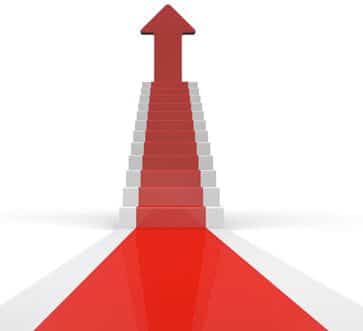Marketing a lawn care or landscaping business used to be pretty straight forward. You would start out by passing around landscape flyers or lawn mowing door hangers. The return (phone calls) would be low, but enough to get a couple of customers and get the ball rolling. Once your income steadied, you could move up to newspaper ads and the yellow pages. Ahh, the 1990’s. It was so simple then.
In 2016 EVERYBODY Looks for Landscapers Online
The game has changed. Now, almost no one reads the newspaper anymore and the yellow pages book sits in your driveway  until it get rained on and you throw them away. Everything is online, including your competition. Meaning, the internet has taken over advertising. According to Nielsen Media, eighty percent of all local consumers look for a business online first before calling. So how do you…
until it get rained on and you throw them away. Everything is online, including your competition. Meaning, the internet has taken over advertising. According to Nielsen Media, eighty percent of all local consumers look for a business online first before calling. So how do you…
In other words, if you are not on the front page of the search engines for your search term (“Austin TX landscapers” for instance) like Google, Yahoo or Bing, you will miss your chance to bid eighty percent of the available work.
So, how do you get your message on the first page of the search engines? There are two main ways; pay-per-click or organic search. Let’s take a look at the options for both methods.
Pay Per Click:
Search engines serve ads for almost all search phrases. Type in “Raleigh NC landscaping” and you will see ads on Google along the top and right hand side of the page. If a searcher clicks your ad you will be charged a fee, anywhere from five cents to fifty dollars per click, depending on how competitive the term is (don’t worry, most local landscape websites are five cents) . The benefits of paid search advertising (also called SEM for “search engine marketing”) is that you can be on the first page within minutes of placing your ad. The disadvantages are twofold. Number one, you will always have to pay, forever. Another related problem is click fraud. Click fraud is where competing landscapers click your ad one hundred plus times to either use up your daily ad budget or make it too expensive for you to continue. The number two problem is that searchers know that these are paid advertisements and therefore place less trust in the listing than the organic (non paid) results.) This means paid ad’s get far less clicks.
Organic Listings:
Organic listings are the main part of the search page, generally ten results per page. These are links to the landscape websites that the search engines think are best suited to the searchers keyword query. It is generally agreed upon that searchers will confine their clicks to the top five results, also known as “above the fold.” Above the fold means the listing that are visible without scrolling down the computer screen. The benefits of organic listings (also known as SEO for “search engine optimization”) are numerous, but we will concentrate on the two biggest positives. First, they are trusted. Searchers rely on Google and Yahoo to retrieve the best information on the internet. In fact, the number one organic result typically receives over seventy percent of all the clicks on the search return page! The second advantage is that those listings are free; organic returns are not for sale. They are earned. The disadvantage of organic returns is that it may take three to four months to optimize your website sufficiently to rank on the first page, and you need phone calls right now.
So which approach is best? The best approach uses both paid and organic strategies. While optimizing your website pages for first page returns, you use paid ads in the meantime. Once your lawn service website ranks on the first page, you drop the paid ads.
Return to the lawn care marketing

1 response